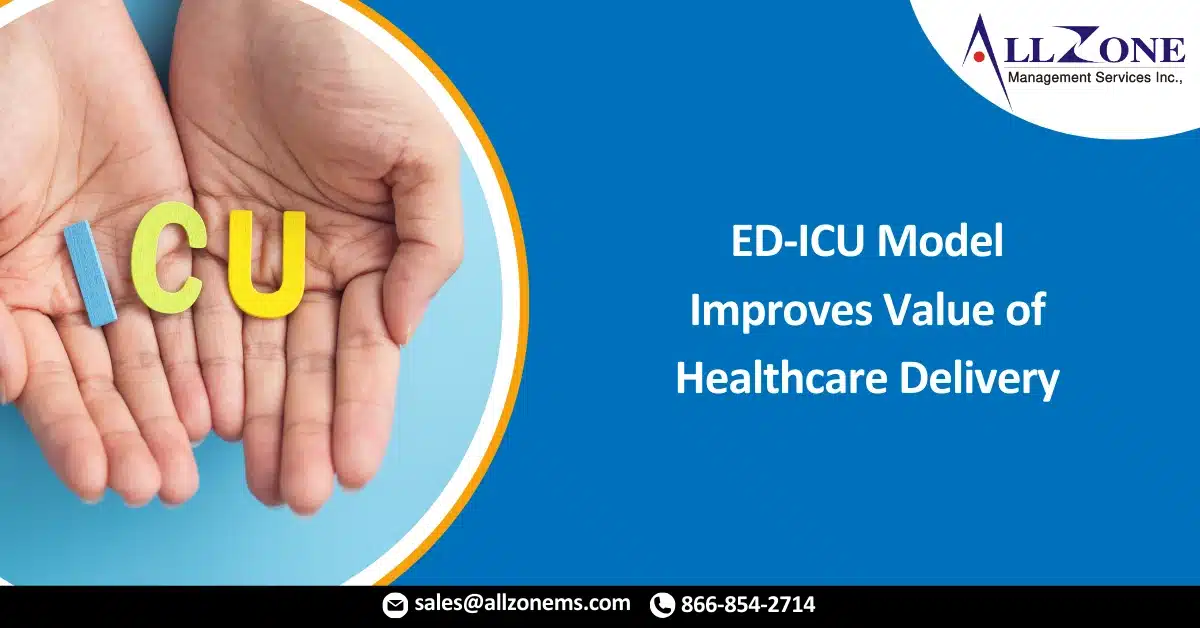The ED-ICU model has the potential to improve the value of healthcare delivery, as it has been shown to improve care quality and have little impact on emergency department costs.
Total cost per emergency department (ED) patient encounter remained unchanged at an academic medical center after it implemented an emergency department-based intensive care unit (ED-ICU), indicating that the model may improve the value of healthcare delivery, a study found.
Facilities have turned to ED-ICU models as a solution to critical care boarding, which can hurt patient care by delaying diagnosis and increasing complications and mortality. Boarding has also negatively impacted clinician and nurse wellness and patient-centered healthcare goals.
Previous studies have found that ED-ICU implementation was associated with improved care quality. However, assessing the model’s impact on the cost of care is essential to determine its true value in healthcare.
Researchers conducted a retrospective economic analysis at University of Michigan Health, which opened an ED-ICU in 2015, to determine how the model changed the direct cost of care delivery to the ED and the hospital system.
They analyzed EHR data for all ED visits between September 8, 2012, and June 30, 2014 for the pre-ED-ICU cohort. The second cohort included ED visits between July 1, 2015, and April 21, 2017.
The final sample included 234,884 ED visits with 60,848 hospital admissions. The pre-ED-ICU cohort included 115,052 patients, while the post-ED-ICU cohort comprised 119,832 patients.
Total direct costs per ED encounter were similar for both cohorts. The mean total direct cost per ED encounter was $4,875 for the pre-ED-ICU group and $4,877 for the post-ED-ICU group.
Direct ED cost per encounter increased from before the ED-ICU implementation to after, rising 8.6 percent from $660 to $717. Researchers said this growth was not unexpected, as facilities need significant infrastructure and staff to operate an ED-ICU. Increased diagnostic testing and therapeutic interventions within the ED-ICE also likely contributed to higher ED costs.
However, ED costs per encounter only represented 14.7 percent of the overall cost per encounter, the study noted.
Meanwhile, direct hospital cost per ED encounter decreased slightly from $4,216 to $4,161.
Net revenue per encounter increased from $5,728 in the pre-ED-ICU period to $6,132 in the post-ED-ICU time. Direct margin per encounter also rose from $856 to $1,255.
Researchers used the Emergency Severity Index (ESI) and the Charlson Comorbidity Index (CCI) to adjust the results for disease severity variation between the two cohorts. The total direct cost per ED encounter did not change when adjusted for CCI and decreased by 4.5 percent when adjusted for ESI.
Total net revenue per encounter increased when adjusted for both CCI (6.4 percent) and ESI (2 percent). Direct margin per case also grew for CCI (46.3 percent) and ESI (38.9 percent).
Researchers also performed sub-analyses of patients with critical illnesses and patients with low-acuity visits. The total direct cost per ED encounter for critically ill patients fell by 22.1 percent after the ED-ICU implementation. Total net revenue decreased by 19.5 percent and margins remained unchanged but positive.
“We hypothesize that these observed findings of reduced costs for critically ill patients are associated with early, coordinated critical care delivery in an ED-ICU when the need is identified, rather than when an ICU bed is available,” researchers wrote.
Total direct cost per ED encounter did not change after the ED-ICU was implemented for low-acuity patients. But total net revenue (10.4 percent) and total direct margin (46.9 percent) both increased.
The study measured how the ED-ICU model impacted overall ED professional billing by analyzing the relative value units (RVUs) across the pre-ED-ICU and post-ED-ICU cohorts. Overall RVUs per encounter increased between the cohorts when ED-ICU RVUs were included but remained unchanged across the entire ED population when ED-ICU encounters were excluded.
The economic value of the ED-ICU model may vary for payers, providers, and patients. However, stakeholders should consider the non-financial benefits of the model, authors expressed in a JAMA Network Open commentary.
“Economic viability is important, but it may be even more important to prioritize the human value of the solution to all stakeholders,” they wrote. “Creating an efficient and high-quality ED-ICU benefits patients and their families and brings value to physicians, nurses, and ancillary staff, especially during times of resource scarcity.”
For More Information: ed icu model maintains ed costs improves value of healthcare delivery

